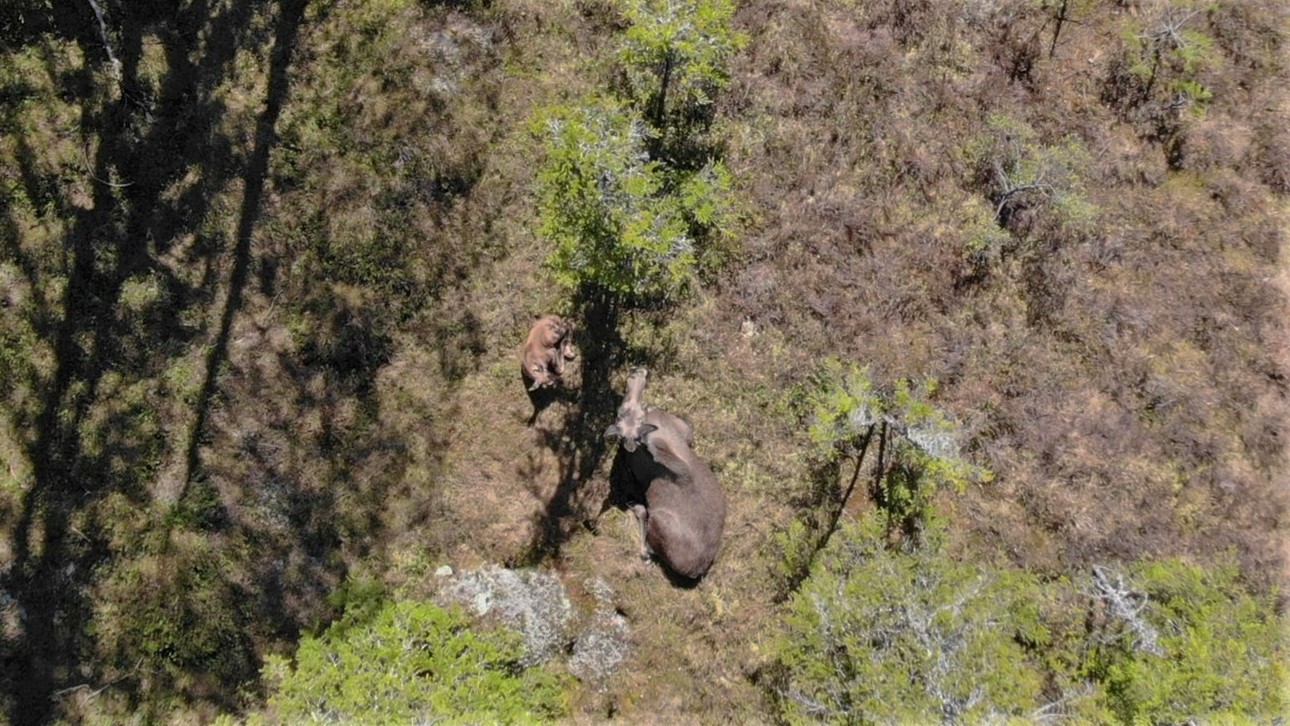Drones are a promising new technology for monitoring game populations. In this project, the researchers evaluated the use of drones as a tool for monitoring moose.
The researchers first tested the detectability of GPS-tagged moose cows and their calves by flying the drone 'DJI Mavic 2 Enterprise Dual' to the last known GPS position of the moose cows at 100 m altitude, then gradually lowering the drone to 70, 50, 30 and 20 m height. There was higher detectability, less time spent and less disturbance for moose when using a drone than when a person approached the moose cow on the ground.
In the next experiment, the researchers evaluated the detectability of moose in more detail using the 'DJI Matrice 300 RTK' drone with a 'Zenmuse H20T' camera. In total, they carried out 33 grid flights over 11 GPS-marked moose cows. In this way, they discovered 77% of the animals. The probability of detecting a moose was greater in cloudy compared to sunny conditions, but was not influenced by other factors (temperature, forest type, canopy cover).
In the third experiment, the researchers estimated local moose density by conducting 34 grid flights in autumn to find moose that were not GPS-tagged. They spotted moose in 9 of the 34 flights, a total of 20 individuals. By taking detection probability into account, this corresponds to a autumn density of 1.38 - 1.65 moose/km2. These estimates agree well with moose density estimations from moose dung counts carried out two years earlier in the same area.
Finally, the researchers evaluated possible methods for estimating moose grazing damage in young coniferous forest stands. In summary, using a drone was a very effective method for detecting adult moose and their calves in boreal forest, and was faster and less disruptive than observations on the ground. Furthermore, the results suggest that monitoring with drones can provide highly reliable density estimates for moose populations locally, and can be useful for estimating grazing damage.
In a report published in the University's assignment report series, the researchers discuss how the method can be implemented on a larger scale for improved moose management throughout Scandinavia.
The report can be read and downloaded here.




